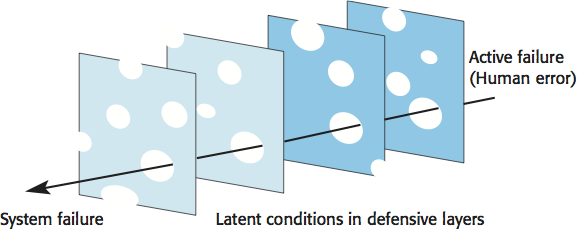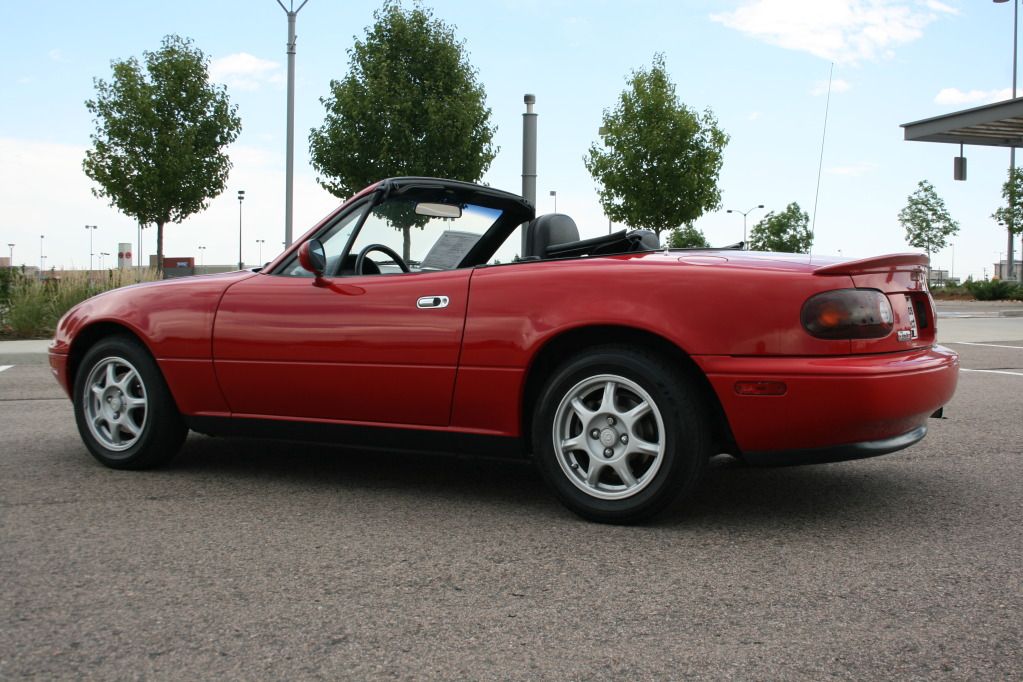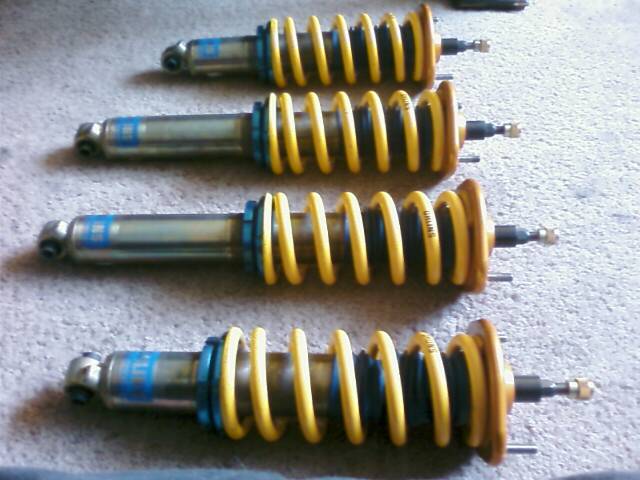97 MXV wrote:
The Baseline is this....One Diameter (1D) Thread Engagement....At 1st glance it is enough given that the a typical nut is only 10 mm....BUT !
It is true that 1D thread engagement is considered enough for threaded joints while things are good and tight. However if the locking nut gets loose, 1D thread engagement will wear out and catastrophically fail much quicker than 1.5D thread engagement.
The potential is real world failure modes of this steering joint with lower than OEM thread engagement. The presence of fine threads suggests that it won't get very sloppy before being able to finally pull out.
Now imagine the steering rack actually not centred properly when the thread is adjusted at "The Tyre Shop". 1D can easily be less than 1D on one side and more than 1D on the other, because it is impossible to see thread engagement directly. It must be inferred and inference can easily lead to error.
Furthermore the locking nut is tensioned against the tie rod end by opposing open ended spanners, the most unreliable spanners and tensioning method imaginable.
Beware The Tyre Shop Factor and the mental hazards everywhere lying in wait.
We all know that shaking hands with the boss at The Tyre Shop is not the same as shaking hands with Murphy, that eager to please Intern from "Kazakhstan" assigned to the job at the last minute because the normal mechanic briefed by the boss had to suddenly manage a crisis at home.
Imagine Murphy forgetting to count enough threads for a dear life to hold on to. And imagine a loved one picking up the car from The Tyre Shop, not remembering to double check.
And imagine checking one side and not the other or dismissing a small difference in exposed thread as insignificant.
Imagine the doomsday scenarios never ending when there are not enough threads for Murphy to play with.
Or to put it another way, what hope is there for soft barriers of defense being effective on that fateful day in the future when steering performance is demanded as a matter of life and death if not enough hard barriers are left after Murphy got the holes lined up in Swiss Cheese with a screw loose.

A high quality and robust Maintenance Strategy starts with a proper System Description including proper specifications of this new extended lower control arm system. Proper specifications have not been found in supplier's sales specifications to date.
One place to start proper specifications is to identify the presence of a "new system in place" to Murphy by painting the extended ball joint a distinctive differentiating distinguishing colour.
The second place is to start testing the significance arising from a Murphy Event. Now a decent 12mm bolt will handle a tension of say 9 tonne and tie rod loads are likely less than 1 tonne.
Such significance testing suggests the issue is not be so much the strength loss with fewer threads, but perhaps the friction loss with fewer worn threads.
Even a few threads engagement is stronger than the compression strength of the tie rod. The thing to fail first is the tie rod buckling and that won't happen cornering on a flat surface.
Reduction in thread friction from wear in a loose thread means there is less torsional restraint on the tie rod.
Whether it is possible for an unscrewing torque to be generated in a tie rod responding to suspension movement, gyroscopic and wheel frequency vibration is another matter entirely.
In any case I see nothing to lose having a Maintenance Strategy which focuses on means to ensure ample thread friction and robust tightening of the lock nut.
A tight nut is actually a good thing as the deflection in the thread from tightening can prestress the threads so their contact surfaces cannot fret in normal use.
Therefore significance testing is starting to point me in the direction of optimum nut tightening strategies and then only last resort use of thread locking compounds.
A Maintenance Strategy might be to toughen the joint against cyclic "shock" loading by increasing the stud length of the exposed threaded part of tie rod using a steel spacer between the tie rod end and a heavily pre-tensioned nut in place of a jam/lock nut.
Adding a 20 mm diameter and 12 mm thick, stiff steel spacer and significant pretension is enough to create a significantly tougher joint that is less likely to suffer from fretting in the threads from normal cyclic loading even though stress in the 1st few threads would ultimately be higher.
The bolt volume under the stiff spacer is able to act more resiliently against normal cyclic loads which otherwise tend to stretch and fret the first few threads in the stiff tie rod end.
In effect more threads are mobilised by higher pretension but stress change in the threads is lower because of the different stiffness of the spacer and the tie rod under the spacer.
Whilst not yet verified, a thickness of only 12 mm should make a worthwhile difference with the presence of a spacer shaped as a pre-tension indicator/pointer free to rotate down under gravity if there is total loss of pretension.
On that point, I could imagine Murphy focusing on the task a little more if there were official 43mm long, 3D printed plastic thread engagement indicators fitted to the tie rods.
Maybe I will talk to mrpham, good pal buddy to see if his latest technology can help demonstrate these extended lower ball joints have potential for commercial acceptability after all.
All I need to do now is laser cut a pair of 12 mm thick steel spacer/pointers, find a pair of hardened steel washers; then clean up and oil the threads before installing and pre-tensioning with new nuts, pop on the plastic thread engagement indicators and its almost done !

























